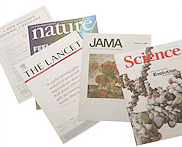Community Embraces New Word Game at Mid-Year Play Day This past Sunday, families at Takoma Park’s Seventh Annual Mid-Year Play Day had the opportunity to experience OtherWordly for the first time. Our educational language game drew curious children and parents to our table throughout the afternoon. Words in Space Several children gathered around our iPads […]
Read moreTag: staff
 The system of getting knowledge about science to the public is broken. One major crack in the system is a disconnect between science museums and new science research.
The system of getting knowledge about science to the public is broken. One major crack in the system is a disconnect between science museums and new science research.
Science museums matter
Aside from the news media, which now has less science coverage as the journalism business contracts, museums play a vital role in how the public learns about science outside of school. New data show that science museums play an important part in this informal learning.
Despite enthusiastic scientists who are using social media, leading citizen science, and supporting other kinds of outreach, the vast majority of scientific information is ensconced in journals and conferences.
To connect this knowledge to the public, it’s common practice for closed-access journals to give journalists free (advance) access to new articles. But the same courtesy is not provided to science museums that would also benefit from new articles, as well as a back library of older articles. And science museums rarely budget for journal subscriptions. (more…)
Relying on Webmasters
May 2nd, 2006 by IDEA
Enabling project staff to update and post new site content prevents bottlenecks. Just as this June 24, 1959 evening rush hour traffic jam on Chicago’s Congress Expressway caused bottlenecks, so can webmasters who are responsible for posting web content. Allowing authors and project staff to post directly to a web site can bypass the bottleneck.
Author: Elisa Warner Permitting respectful disagreement heads off larger conflicts. Problem An open exchange of ideas is crucial to organizational growth and development. However, disagreements between individuals can lead to interpersonal conflicts that can create an unpleasant environment and reduce an organization’s effectiveness. Solution Create a team culture that embraces differences and gives members permission

